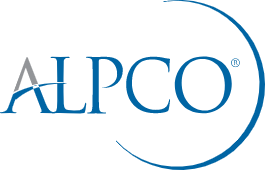Preparing for a Successful Assay Validation
On-boarding of new assays is critical for menu expansion and revenue growth, but the validation of a new assay requires a significant investment of time and resources. Proper planning can reduce errors and delays, minimizing validation time and reducing the impact on normal operations. Below are a few planning suggestions to help avoid common pitfalls and make the implementation of new assays as efficient as possible.
Validation Plan
Any validation study should begin with a detailed plan. Based on corporate policies and state regulatory requirements, determine the validation assays that must be performed and the conditions that must be met for each assay. Validation requirements and specifications will typically vary for research kits and kits intended for in vitro diagnostic use. For each validation assay, the number/types of samples to be tested, number of replicates, performance targets/acceptance criteria, and formulas to be used for calculating performance should be clearly specified. If spiked samples will be prepared for a validation, instructions for preparing spiked samples to achieve appropriate concentrations while maintaining the sample matrix should be included in the plan. Instructions for preparing, handling, and storing validation samples, reagents and data should be outlined as well.
Validation Schedule
The validation schedule will be based on the validation plan and should include time for sample preparation/storage of frozen sample aliquots, reagent preparation, assay procedures, data review, and write-up of results. Extra time for potential re-tests should be built into the schedule. Required time on shared equipment and specific personnel assignments should be explicitly outlined.
Assay Templates
It is best to design assay templates for each experiment in advance. Having all of the assays and replicates mapped out will assist with scheduling and determination of volume requirements for standards, controls, samples, and assay reagents. Assay templates may be included and approved as part of the validation plan.
Personnel Scheduling
Ensure qualified staff will be available for the required time frame(s). If staff need to be trained on new equipment or a new assay, verify availability of field applications specialists from the appropriate vendors for training. Any necessary training should be incorporated into the Validation Schedule or completed before validation begins.Personnel Scheduling

Equipment
Ensure the required equipment for pipetting, shaking, washing, and reading of plates will be available at the scheduled times. It is best to use the same equipment for all assays to reduce potential variability. Ensure necessary manual pipettes are calibrated and available for the duration of assay validation. If running on automation instrumentation, make sure any required preventative maintenance (PM) is completed prior to the start of the validation and required consumables are on hand.
Sample Availability
Based on the planned validation assays, it is important to ensure that sufficient number, volume, and quality of samples is available prior to the start of testing. For some experiments, it may be important to include samples that span the Analytical Measuring Range (AMR) of the assay. For inter-assay precision experiments, a large volume of spiked samples may need to be prepared and aliquoted for testing on different days. Assess the storage conditions and previous freeze-thaws for existing samples and determine if they are suitable for use in validation studies. If needed, the purchase or requisition of additional samples can sometimes take time, so this should be considered during the planning process.
Required Reagents
Calculate reagent and kit requirements based on the validation plan. For reproducibility testing, multiple lots may be required. Multi-day, inter-assay testing may require a large number of kits from a single lot. Be sure to work with your vendors to secure the appropriate materials to complete scheduled validation assays and potential re-tests built into the validation schedule as a contingency.
Consumables
A shortage of basic laboratory supplies or automation consumables, such as pipette tips, dilution plates/tubes or reagent reservoirs can throw a validation off schedule. Stock up on any consumables required for the assay procedure and sample preparation prior to the start of validation to avoid unnecessary delays.
Approved Acceptance Criteria
All key stakeholders should sign off on the validation plan and the acceptance criteria for each test being performed. Getting buy-in up front ensures everyone’s expectations are in line and paves the way for prompt approval when performance requirements are met.
Format for Data Reporting & Validation Review
Understand the preferred format for presenting validation data, communicating study results and approving the validation study. Proper planning will speed validation and on-boarding of new tests or equipment and minimize disruption in the laboratory.
Download the "Assay Validation Checklist" for reference!
Remember, ALPCO is here to help!
For many ALPCO kits, we can provide reagents, sample preparation devices, sample panels, training, and/or validation assistance. Please contact our Customer Solutions team at [email protected] or by phone at 800-592-5726.

